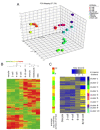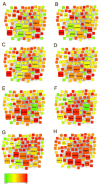Waves of early transcriptional activation and pluripotency program initiation during human preimplantation development
- PMID: 21775417
- PMCID: PMC4074286
- DOI: 10.1242/dev.064741
Waves of early transcriptional activation and pluripotency program initiation during human preimplantation development
Abstract
The events regulating human preimplantation development are still largely unknown owing to a scarcity of material, ethical and legal limitations and a lack of reliable techniques to faithfully amplify the transcriptome of a single cell. Nonetheless, human embryology is gathering renewed interest due to its close relationship with both stem cell biology and epigenetic reprogramming to pluripotency and their importance in regenerative medicine. Carefully timed genome-wide transcript analyses of single oocytes and embryos uncovered a series of successive waves of embryonic transcriptional initiation that start as early as the 2-cell stage. In addition, we identified the hierarchical activation of genes involved in the regulation of pluripotency. Finally, we developed HumER, a database of human preimplantation gene expression, to serve the scientific community. Importantly, our work links early transcription in the human embryo with the correct execution of the pluripotency program later in development and paves the way for the identification of factors to improve epigenetic reprogramming.
Figures




References
-
- Aran B., Rodriguez-Piza I., Raya A., Consiglio A., Munoz Y., Barri P. N., Izpisua J. C., Veiga A. (2010). Derivation of human embryonic stem cells at the Center of Regenerative Medicine in Barcelona. In Vitro Cell. Dev. Biol. Anim. 46, 356-366 - PubMed
-
- Bensaude O., Babinet C., Morange M., Jacob F. (1983). Heat shock proteins, first major products of zygotic gene activity in mouse embryo. Nature 305, 331-333 - PubMed
Publication types
MeSH terms
LinkOut - more resources
Full Text Sources
Other Literature Sources
Medical
Molecular Biology Databases

